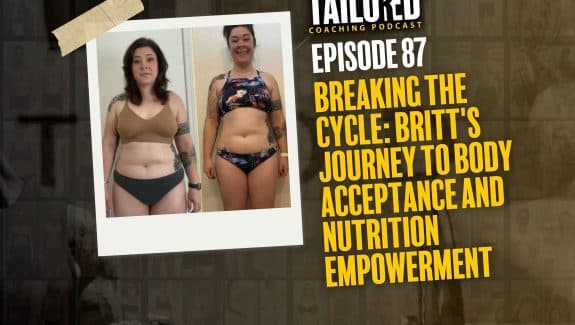Training Intensification Tip Part 1: Supersets
Intensification techniques, also known as advanced techniques, are a scientific term used for methods like drop-sets, cluster sets, pre-exhaustion, rest-pauses, reciprocal sets, and eccentrics. Each technique has a slightly different purpose and can potentially be used in certain scenarios to maximize how you adapt to training.
We will be covering all of these intensification techniques and training methods over the course of multiple articles on the site. However, in this specific article we will start with supersets; we’ll cover the science behind supersets, and then provide a practical application section so you can understand how and when to work these techniques into your training program.
The Science Behind Training Intensification Methods
The success of a training program depends on the manipulation of program variables such as load, number of sets and repetitions (volume), rest interval between sets, exercise order, movement speed (cadence/tempo) and training frequency. The combination of these variables must be taken into account and tailored to fit the individual based on their objectives, physical ability, and training status.
Advanced techniques manipulate several of these variables, such as rest intervals (drop sets/cluster sets), movement speed (eccentrics, rest-pause), and exercise order (pre-exhaustion, reciprocal sets). The science testing advanced techniques is fairly small and involves a lot of considerations, so below we’ve focused on the chronic studies, lasting more than four weeks, more so than the acute studies, which are generally only a single exercise session.
Research Review: Supersets
Supersets are groups of exercises (usually 2) performed successively targeting different muscle groups in two ways. Supersets can be used to describe protocols grouping exercises targeting the same muscle group. Alternatively, supersets can be agonist-antagonist paired supersets, also known as reciprocal sets or paired sets, referring to the coupling of exercises targeting muscle groups in an agonist-antagonist relationship, performed in an alternating manner.
An example is bench press paired with a barbell row. The idea behind antagonist-agonist sets is that by enhancing reciprocal inhibition of the antagonist superset training elicits greater mechanical forces in the agonist that in turn promotes a corresponding heightened anabolic response.
Agonist-antagonist superset training has been investigated by less than a dozen studies and includes mostly acute research and two long-term studies, only one of which measures muscle hypertrophy. In the first chronic study, (Robbins et al., 2009), 15 trained males were assessed for throw height, peak velocity, and peak power in the bench press throw and 1RM in the bench press and bench pull exercises before and after an 8-week training program using traditional or antagonist-agonist sets.
While there were no differences in the dependent between the two conditions, bench pull (aka row) and bench press 1RM increased significantly under the antagonist-agonist set condition and peak power increased significantly under the traditional set condition. The results suggest that the reciprocal set was more time- efficient than the traditional set condition with respect to development of 1RM bench pull and bench press, peak velocity and peak power since the workout was much shorter. This means that antagonist-agonist training could be beneficial if you need to save time in the gym, especially if your goal is to increase strength or power.
In a more recent study on agonist-antagonist superset sets, 23 young athletes were randomized to a superset group or a traditional training group (Fink et al., 2020) for 8-weeks of training. The training included bicep curls and overhead triceps extension at 50-60% 1RM, three times per week.
The superset group performed 1 set of biceps curls followed by 1 set of overhead triceps extensions without rest. A total of 3 sets (combination of 2 exercises) were executed with 60 seconds of rest between sets in the superset group. The traditional group performed 3 sets of biceps curls followed by 3 sets of overhead triceps extensions with 60 seconds rest between sets and exercises. Both groups used adjustable resistance elastic bands and went to muscular failure each set.
Ultimately, the authors found no differences between groups for muscular strength, but only the traditional group significantly increased 1RM for the elbow extensors. Both groups improved muscle size yet there were no differences between groups. One benefit to the superset group was that they improved muscular endurance.
Overall, this study tells us that superset training may enhance muscular endurance while attenuating maximal strength gains. There does not appear to be a benefit to performing superset training, but it may provide a time-efficient strategy or provide a benefit to muscular endurance (adding more reps).

How To Use Supersets
Advanced training techniques could provide an additional stimulus to break through plateaus for trained subjects and prevent excessive monotony in training. As you can see, there isn’t much science to guide us with respect to any of the intensification methods – this includes supersets. Because of this, as coaches, we need to take what we can from the science and use our fundamental knowledge of the science-based strength-principles, as well as our own experience in the personally and with clients, to come to a practical conclusion on when these techniques should be used and how they might be used differently per each individual.
Now, that doesn’t give YOU personally much help if you’re a new trainer or simply someone who just likes to train in the gym and follow other coaches’ programs.
Which is why directly below we’ve written some practical applications for supersets, as well as a video by Coach Cody on the topic, so you can have some direct guidance on the topic:
Programming Supersets
What is the most clear about supersets, whether using the same muscle group or antagonist-agonist muscles, is that they are a time efficient way to train. In some research we see added muscle growth or improved performance, others we don’t. But what we always see is a decrease in the time it takes to get a training bout finished, which means that regardless of your goals it can be a time-efficient way to train. We also have to remember that we may be sacrificing a percentage of our gains for this benefit, however if you’re very limited on time that may still be a better choice to make in order to fit more overall volume/muscle groups into each session you do have.
What is also pretty clear in the literature is that they are not better compared to traditional set training for muscle strength or muscle size. Which means you are much more likely to maximize both strength potential and muscular development, by performing straight sets with adequate rest periods between (allowing for more recovery between sets and therefore more volume accomplished by the end of each training session).
The main benefit with supersets, outside of time efficiency, then, is that supersets increase muscular endurance – which is likely due to the metabolic stress induced. So if your main goal is to increase muscle size, then supersets should be used sparingly. Supersets should mostly be used just to make sure you’re getting some training volume in rather than skipping a set of exercises due to time constraints. They could also be used at the very end of a training session to minimize the overall volume effect, since you’re likely fatigued by then anyway. Practically, this could be supersetting arms with a bicep curl and tricep extension, or two bicep/tricep exercises back-to-back.
Now, that’s what the science says… but what does our experience tell us?
First and foremost, it’s extremely dependent on the exercises selected and muscle groups being trained. As mentioned multiple times throughout this article, supersets are much more likely to be effective for producing better results when they’re used with antagonistic muscle groups and with isolation exercises specifically. This would mean doing leg extensions supersetted with leg curls, rather than performing squats supersetted with stiff leg romanian deadlifts (which is a low-back injury waiting to happen).
This is partially because the antagonistic pairing actually alleviates some of the lactate and metabolite production built up in the muscle group trained, as you move into the next exercise. In other words, once you get an insane pump in your biceps from doing barbell curls… you move onto cable tricep pushdowns and start to create that same pump-effect in the triceps. When you do this, your body sends the blood-flow, metabolites, lactate, etc… to the triceps, alleviating the swelling in the biceps. As you alternate back and forth, you’re essentially aiding the recovery of each muscle group and allowing your performance to improve or at the very least, maintain.
This has been shown in research with leg extensions and leg curls, bench press and barbell bent rows, bicep curls and triceps extensions, and even calf raises and leg presses or squats (which is likely just from mobilizing the ankle prior to a squatting pattern).
From experience, you’ll also notice an improved joint health effect. This is purely anecdotal, so we can’t provide any scientific evidence to support this claim. However, we’ve noticed an improvement amongst many people with regards to joint aches and pains after months and months of progressive training. This may be due to accomplishing similar hypertrophic results, with lower loads (and higher loads create more joint stress) OR it could simply be from the pairing nature and the pump (cell swelling) it can provide us with when taking short rest periods.
Finally, it’s important to note that antagonistic super sets aren’t the ONLY way to pair exercises together and receive potential benefit out of it OR save time without causing detrimental effects.
For example, you may be performing lateral raises before moving into some direct arm training and traditionally you’d program it for 3 sets of 10 reps lateral raises with 2 minutes rest between, to ensure you could maintain the load used for the duration of all sets. Then you move into bicep curls and tricep extensions, in the same fashion. However, you could superset all 3 isolation exercises in a circuit like fashion with 1 minute rest between each. This gives you 1 full minute to recover, mainly metabolically, before moving into the next exercise which isolates a completely different muscle group and should receive no negative effect from doing so whatsoever.
You may even experience more of a mind-muscle connection with each muscle group, because by fatiguing your delts you will no longer be able to compensate during the curl (which is why some research supports pre-fatiguing secondary muscle groups, like the triceps before bench pressing, to allow more isolation towards the primary muscle group, which would be the chest in this example).
So… Should YOU Be Using Supersets?
After reading this entire article, you should be very close to being able to make a decision on whether or not supersets are going to be useful or detrimental for you and your goals. But in case you need something to wrap up all the science, methodologies, and practical applications… here’s a video breakdown that should do the trick:
References:
- Maximizing Muscle Hypertrophy: A Systematic Review of Advanced Resistance Training Techniques and Methods.
- The effects of traditional, superset, and tri-set resistance training structures on perceived intensity and physiological responses.
- Neuromuscular responses for resistance training sessions adopting traditional, superset, paired set and circuit methods.
- Longer Interset Rest Periods Enhance Muscle Strength and Hypertrophy in Resistance-Trained Men.
- Volume Load and Neuromuscular Fatigue During an Acute Bout of Agonist-Antagonist Paired-Set vs. Traditional-Set Training.
- The effect of an upper-body agonist-antagonist resistance training protocol on volume load and efficiency.
- Effects of different rest intervals between antagonist paired sets on repetition performance and muscle activation.
- Acute effect on power output of alternating an agonist and antagonist muscle exercise during complex training.
- Effects of exercise order on upper-body muscle activation and exercise performance.






















































































































































































































































































































































































































































































